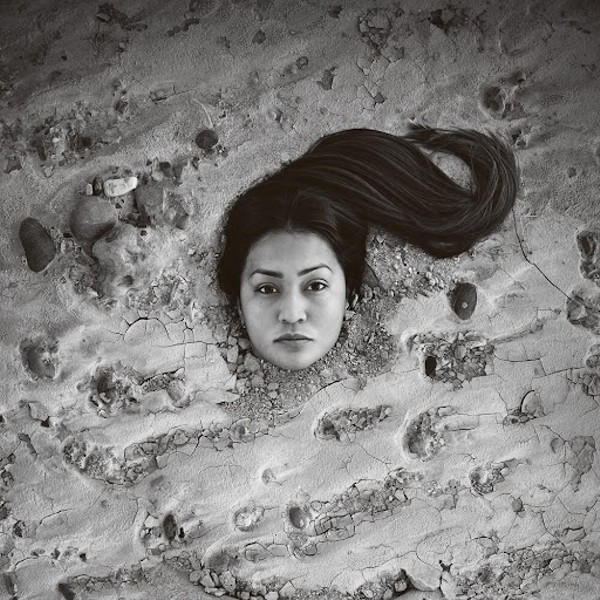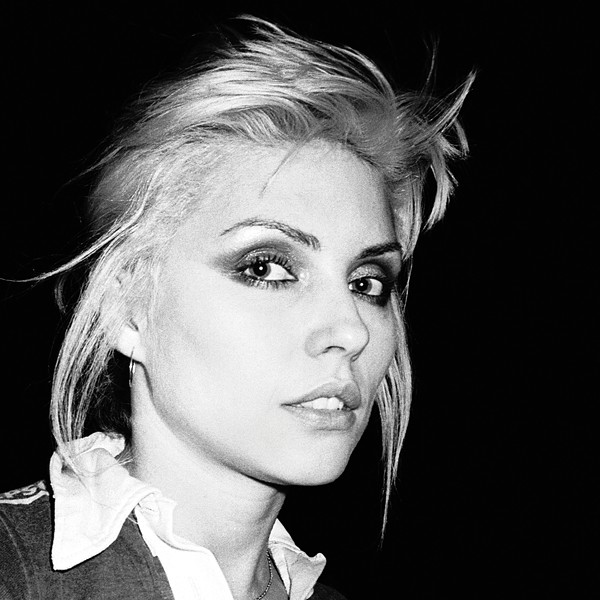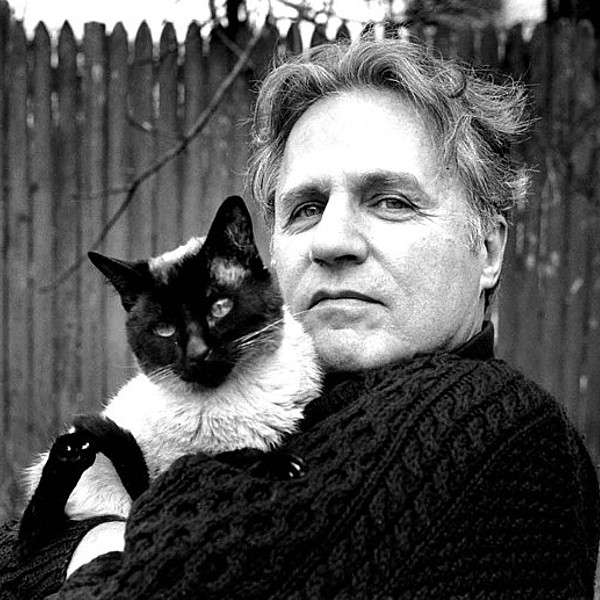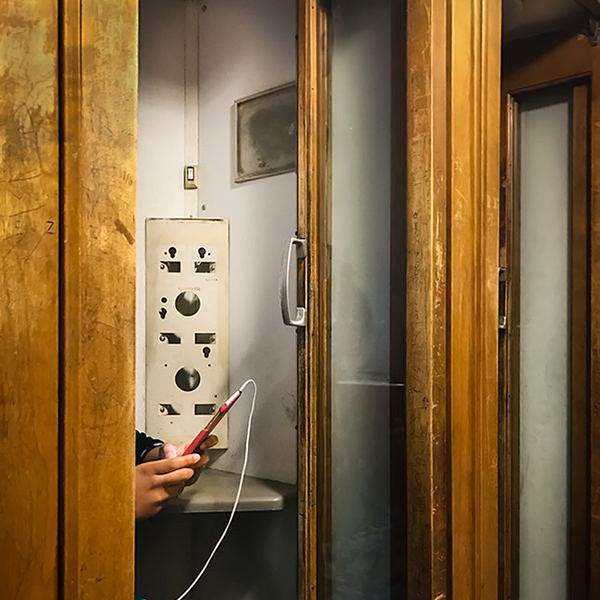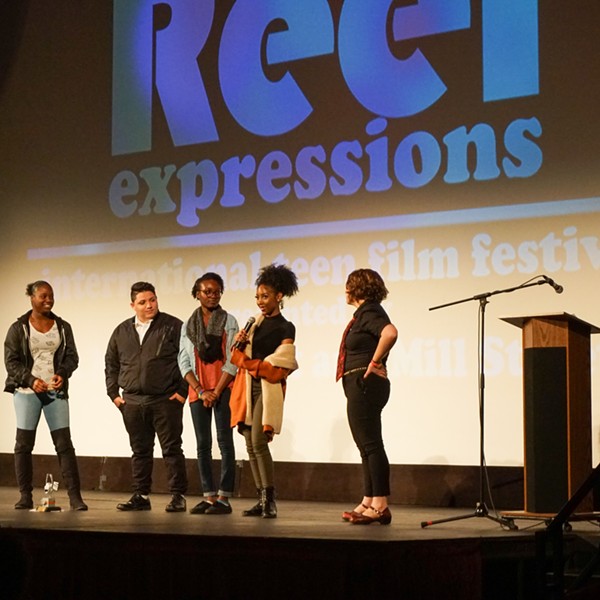Photographer Nicholas Walster was born and raised in northern England, studied photography in London, and eventually emigrated to the US, where he’s lived for the past 20 years.
His most recent series of works, called Personal Panoramas, circle back through the memories and the places he’s found himself throughout his life. Strung out as a series of cinematic frames, he’s combined both historical and contemporary images of members of his family and himself at various stages of life, alongside evocatively blurred, vignetted images of nature and landscape that ground the mental/emotional voyage represented in the works. The contrast between the variously toned archival images and the subtly colored new photographs yoked to them—along with the variability of focus throughout—seems to effortlessly embody the complexity and beauty of memory, and the sometimes unexpected linkages we make between feelings and moments in time.
Walster plans to show these works in October at the Sharada Gallery in Rhinebeck. Portfolio: www.nicholaswalster.com.
The return of the text
I was born in Yorkshire, and when I was 18 I went to the University of Westminster (then it was called the Polytechnic of Central London), which was the only department offering a photographic degree in England. I studied there under a man called Victor Burgin. I arrived with the naïve thinking of a Yorkshire lad—I was very much in love with the nature of photography, and the pure visual expression that it afforded me—and to people like Victor, the whole Marxist/semiotic nature of photographic discourse at that time was very opposed to that. Their basic idea was that there wasn’t a pure visual experience, and everything had to be translated into language or signs, as the semioticians called it. I was very much opposed to that in my mind, but as I’ve grown older, I’ve come to see that as a very intriguing idea for me, and also a very visually interesting idea, in terms of combining text and image, and how that refers to what I now believe are our individual perceptions, how they dictate the world that we see, and how we overlay the world with our own perceptions.
Language and distance
The Inner Light series came about after I had a near death experience in 2005, where I fell 22 feet out of a tree with a chainsaw. Dramatic experiences like that have a very interesting impact on the interpretation of time to us, when we look back at them. When you do the mathematics of it, it only took a sixth of a second or something for me to fall that distance. But in my own mind, [the time] was completely expanded, and in that expansion of time, I had this experience of seeing a lot of the images I had taken as a photographer over a 30-year span of time, and they were presented in a completely different way, in a shadow box, in which you looked at them literally through language. I saw the shadow box was surrounded by red funereal velvet, and encased in a black outer frame. That lead to the Inner Light series, where I tried to create in material what I had envisioned in that near death experience. The series is literally looking through language [written on a transparent pane] at images, literally lit from within. It’s a visual metaphor for how I feel that we look at the world.
Being and time
The Personal Panoramas came from [the Inner Light series], and in a way they share a similar visual layout, with text overlaying images, but in the new series, there’s no physical space between the two. They’re about trying to evoke a linear passage of time, but the idea is that each moment of our lives is informed by what’s gone on before, our vision of the past, and what we hold onto in terms of our ancestors, our images and thought and feelings about people from the past, our family, our friends, et cetera. For me, the limits of photography are such that I always wanted to break out of them, I wanted to create some concept of the passage of time within the photograph, which obviously is impossible—that’s why that is usually the arena of film. They combine members of my family at different stages of their lives, with myself at different stages of my life, and my children, so that this concept of time is condensed in a way. The idea is that time is just a product of our mind, and it’s very flexible in a way, according to how you think about it, how you see it, and how you play with it.
A shift in perspective
There’s a wonderful quote from Thoreau, I think—something like “the youth gathers his materials to build a bridge to the moon, or perchance a palace or a temple on earth. At length, the middle aged man concludes to construct his woodshed from them.” For me, that points toward the way that I conceive of my life at the moment. These pieces are an homage to my ancestors in a way, and an homage to an England that I haven’t known since my youth, and culture that in some ways is more foreign to me now than America is.
My hope is that I have unveiled a part of my own life that is similar to the experience of everybody else. I believe that we’re all the same, at some level. The creative pursuit is really about finding that common experience and common language, and converting into something material that feeds on that arena. In a way, my hope is that it taps into a universal experience. I don’t mean that on a literal level, but on a level that’s talking about roots—my landscape and my physical roots are not the same as everybody else’s, but the reference is to one’s own roots, one’s own sense of belonging. The yearning of every human being is to feel that they belong, in some larger sense, than their own individual connections. In a way, that’s my investigation with these things, that idea of when do I feel separate, when do I feel part of something bigger, when do I have a sense of community, all of those things. How does looking back help me with those kinds of things? What’s the role of perception within that?
Film bytes
I was seduced by the look of images from the Holga camera [a cheap camera with a plastic lens that distorts images semi-accidentally]. In my commercial work, I use large-format cameras, and I always have to be very technically oriented. So the freedom the Holga offered me was a revolution. When I saw the effects that it gave, I loved it. There’s a sense of mystery, a kind of haziness of nostalgia and memory that it evokes, and I accentuate it by smearing Vaseline on the lens. To complete the piece, I scan the old family photos and put them together with images from the Holga.
Higher truths
In some of the Personal Panoramas, I only use my own text, journals that I’ve kept, for example, but in some of them I also introduce some spiritual writings. Within those pieces, what I wanted to highlight was the contrast between musings of the ego, of a separated concept of our own selves, and then the universal wisdom of spiritual texts, which to me point toward a more universal truth. One of the reasons that I write the way that I do, which to most people is illegible, is because a lot of it is not worth the paper that it’s written on. In a sense, it’s all drivel. That is intriguing to me too, in the way that I think that a lot of what we think, all of our beliefs, are actually completely incorrect. It’s nice for me to present all of that as unintelligible and illegible. I like that in one sense, but of course in another it’s infuriating. I wanted to make a marriage between the voice of the ego and the voice of a part of ourselves that is connected to a higher truth.












